Archive
Rolf Tietgens
- Rolf
- Tietgens
Rolf Tietjens, Rolf Teitjens
- 08-11-1911
- Hamburg (DE)
- 11-12-1984
- New York City (US)
- PhotographerEditorWriter
Rolf Tietgens was a German émigré photographer who arrived in New York in 1938. Although, in the course of his photographic career, his artistic and surrealist images were published and shown at exhibitions, his work, today, is very little known.
Word Count: 39

Portrait of Rolf Tietgens, n.d. (© Keith de Lellis Gallery, New York). 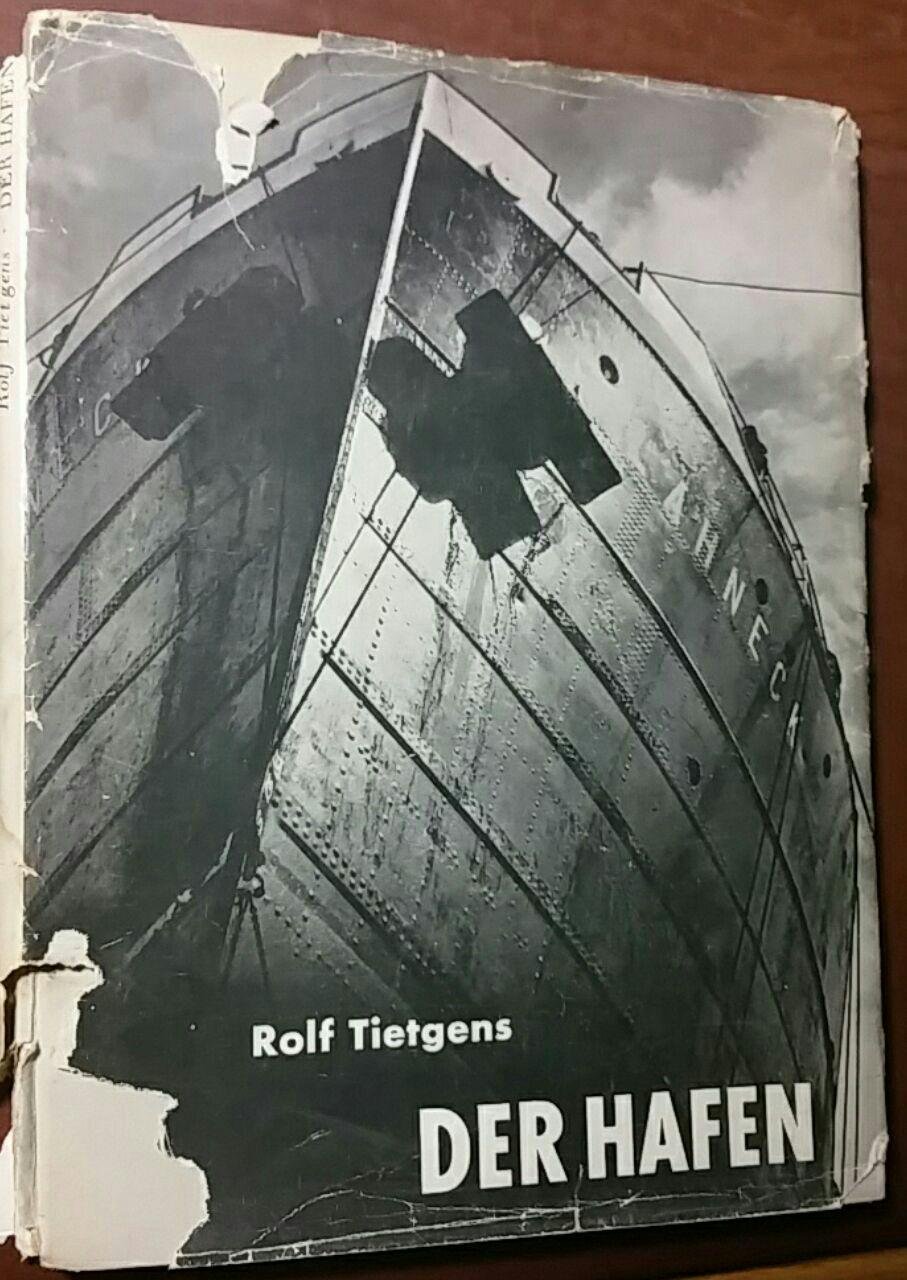
Der Hafen by Rolf Tietgens, Ehrmann Verlag, 1936. 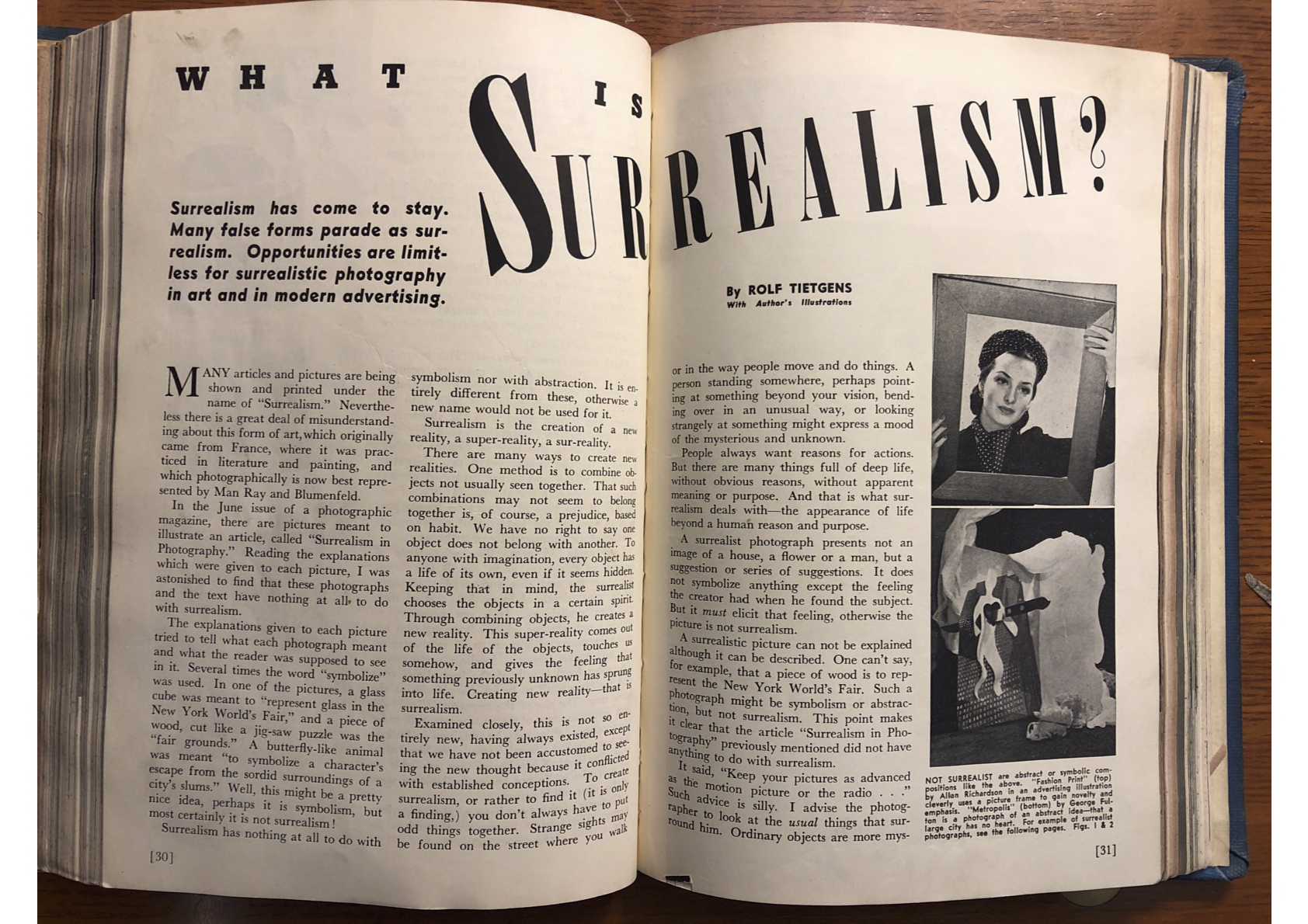
Rolf Tietgens. “What is Surrealism?” Minicam, July 1939, pp. 30–31 (Photo: Helene Roth). 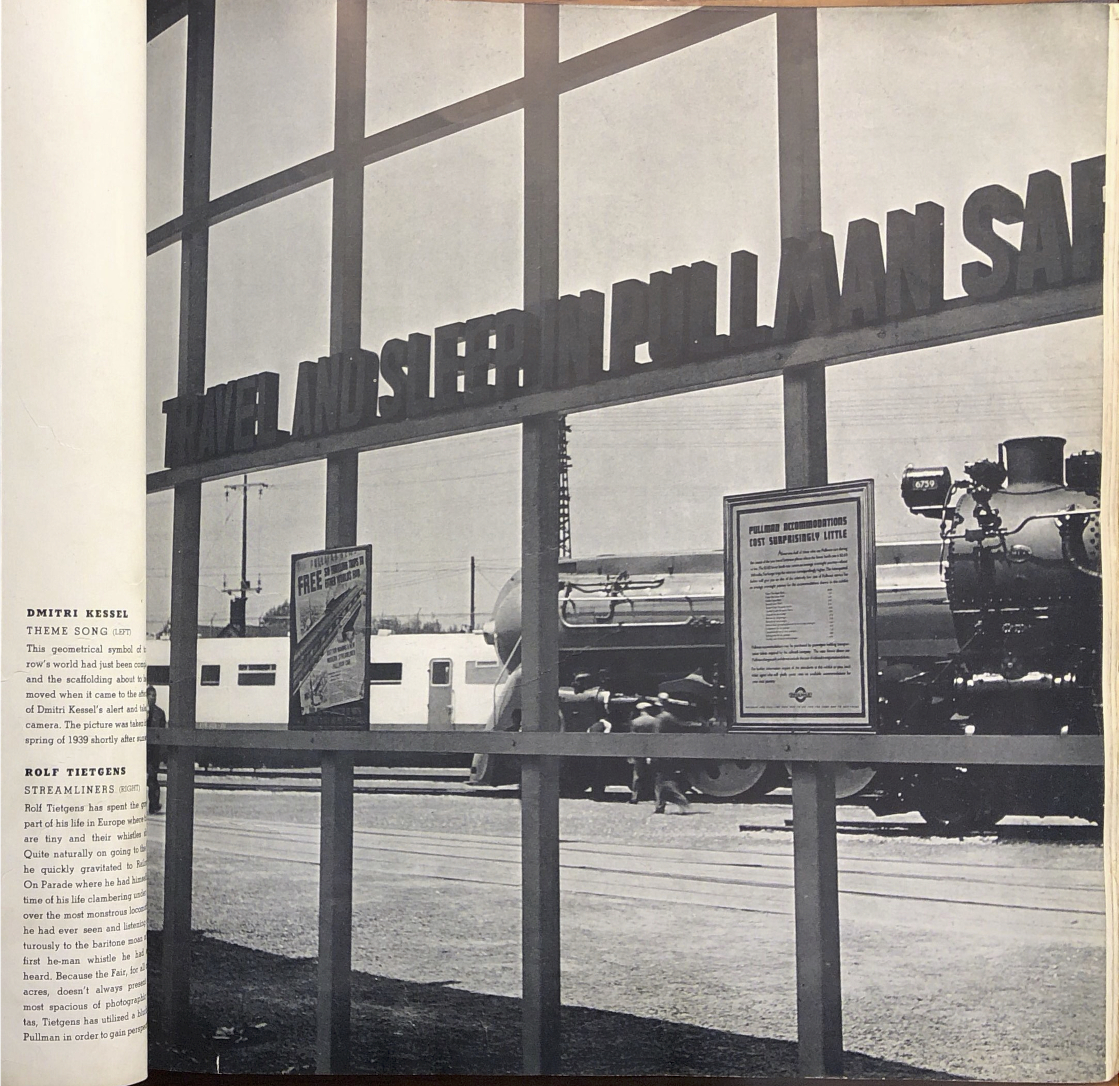
Photo by Rolf Tietgens of Streamliners at the World’s Fair published in the World's Fair special issue of U.S. Camera, August 1939, p. 45 (Photo: Helene Roth). 
Photo by Rolf Tietgens of the Communication Mall at the World’s Fair 1939 published in the World's Fair special issue of U.S. Camera, August 1939, p. 38 (Photo: Helene Roth). 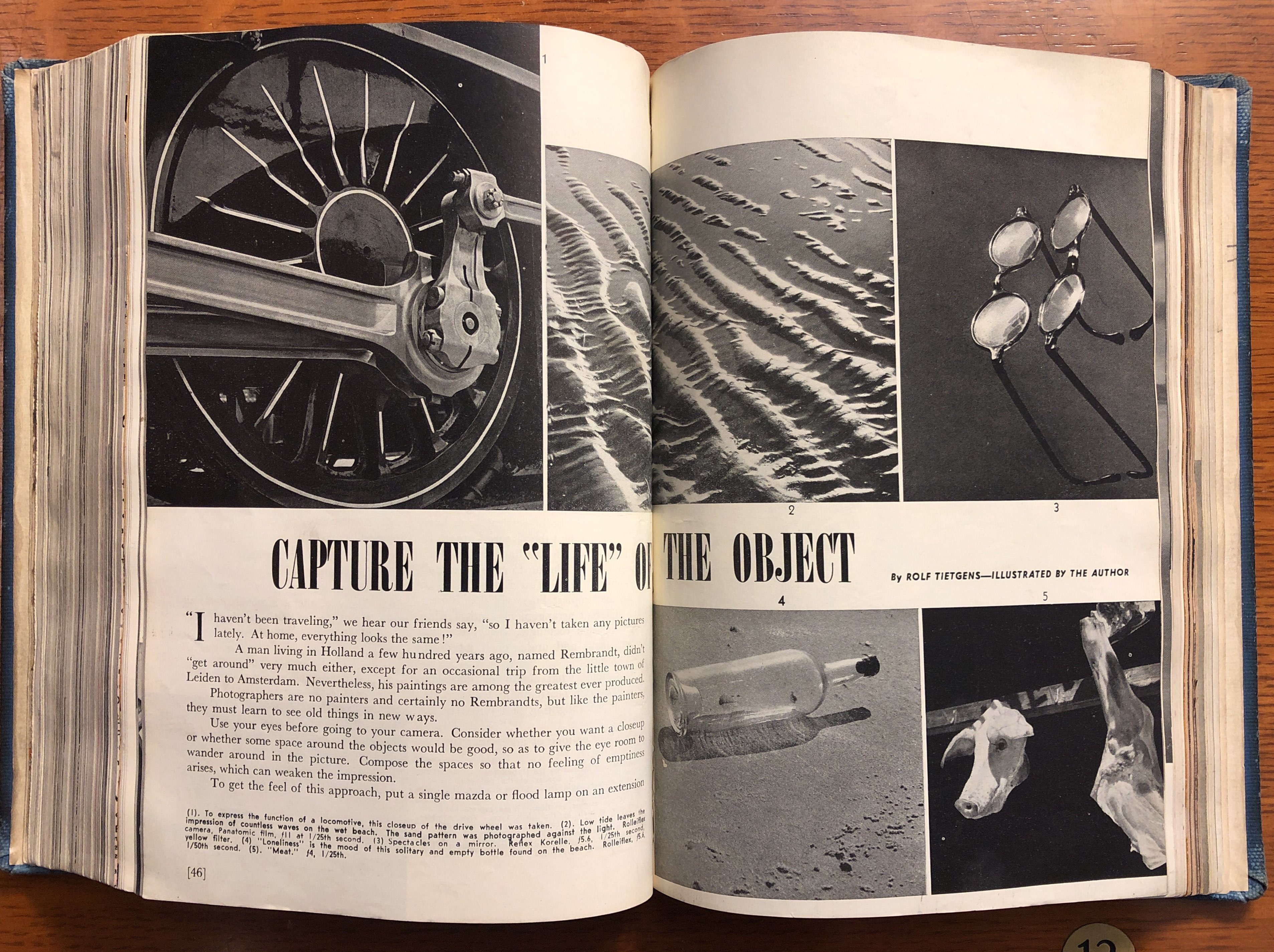
Rolf Tietgens. “Capture the ‘Life’ of the object.” Minicam, January 1940, pp. 46–47 (Photo: Helene Roth). 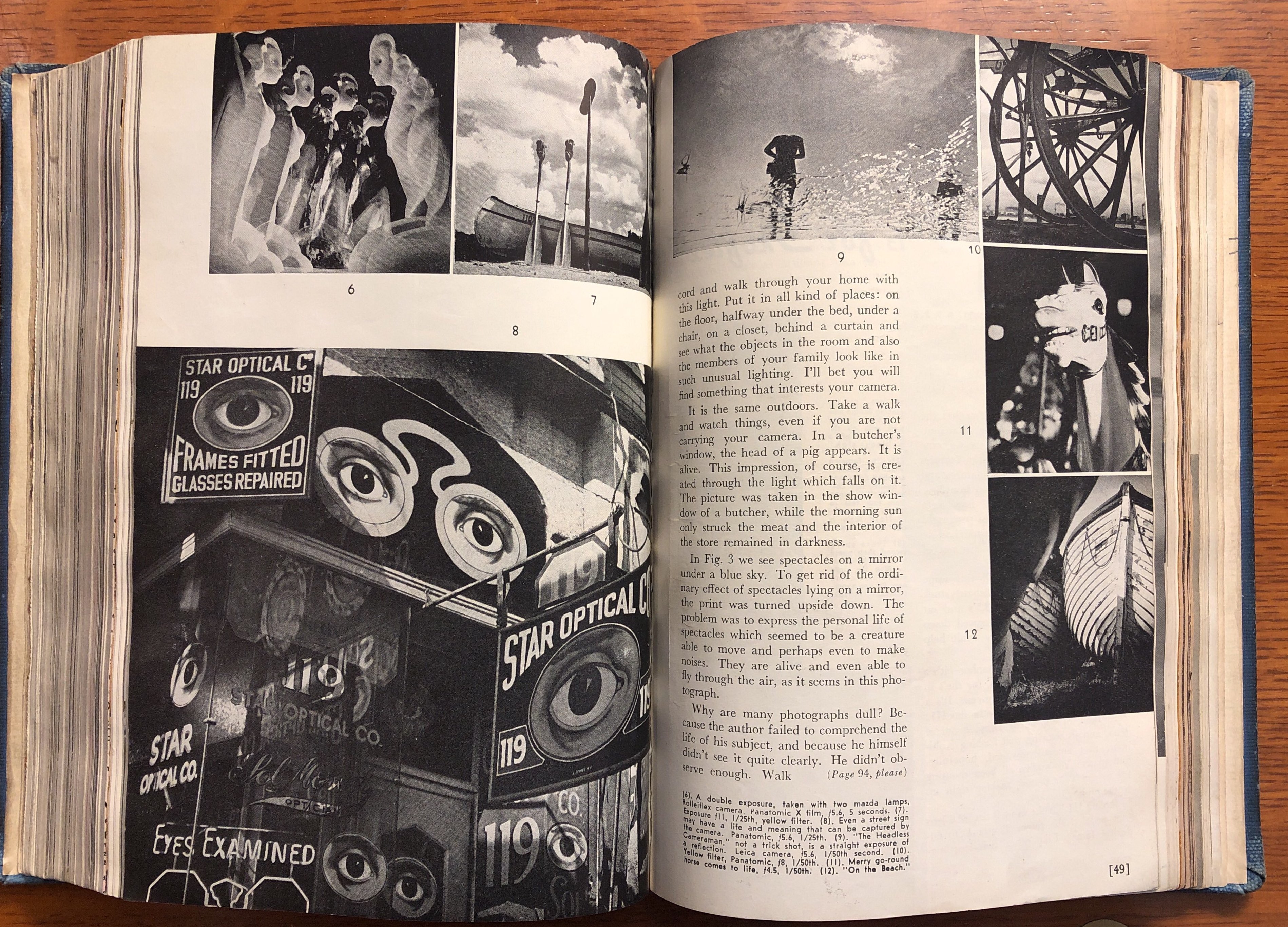
Rolf Tietgens. “Capture the ‘Life’ of the object.” Minicam, January 1940, pp. 48–49 (Photo: Helene Roth). 
Felix Kraus. "Why Photographers experiment." Popular Photography, February 1945, pp. 28–29 (Photo: Helene Roth). 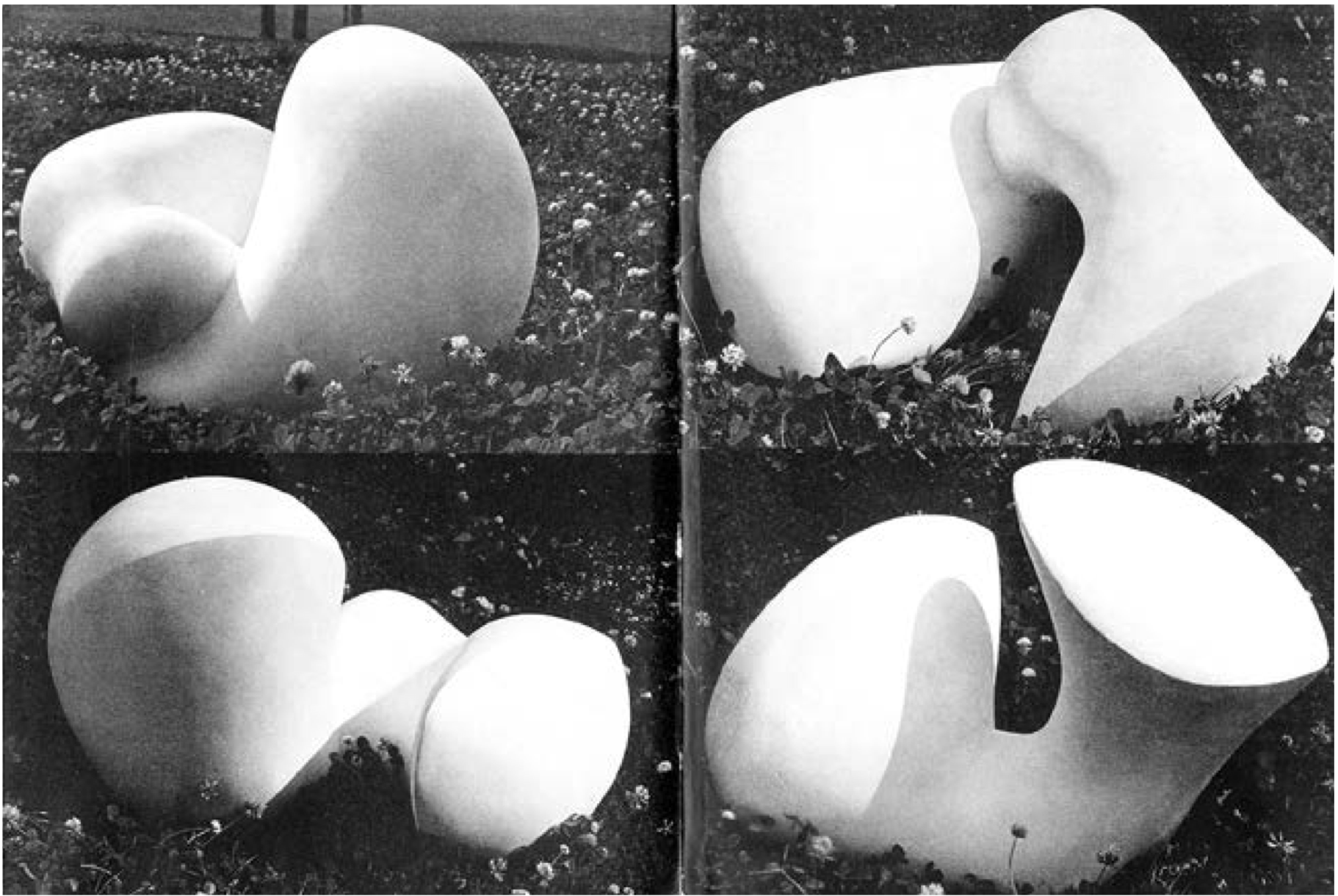
Hans Arp. Human Concretion, 1935, limestone 73 x 49,5 x 45 cm, photograph by Rolf Tietgens and reproduced in Arp: On My Way. Poetry and Essays 1912–1947, edited by Robert Motherwell, Wittenborn, Schulz, 1948, pp. 130–131 (Photo: Helene Roth). 
Published photo by Rolf Tietgens (Feininger 1952, 116–117). 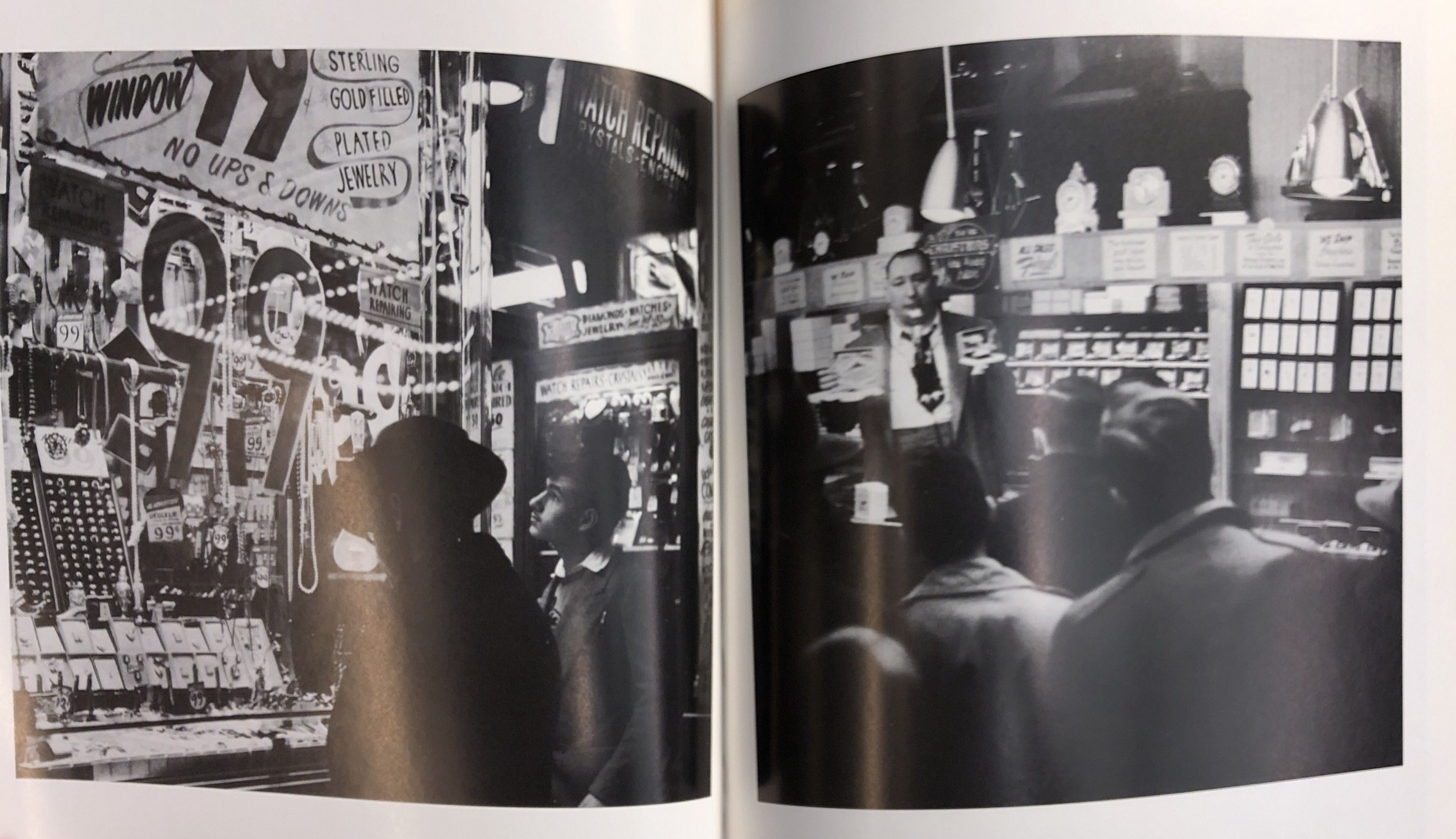
Times Square. U.S.A. (1952) photobook by Rolf Tietgens, Keith de Lellis Gallery, 1992 (Photo: Helene Roth). Anonymous. “German Taken Into Custody.” The Daily Herald, 18 January 1942, p. 1.
Anonymous. “City Photographer Wins Two Prizes in New York Contest.” Albuquerque Journal, 1 November 1941, p. 8.
Anonymous. “Rolf Tietgens is dead at 73; German-Born Photographer.” The New York Times, 20 December 1984, p. 30. Accessed 1 March 2021.
B. N. “Image of Freedom.” The Bulletin of the Museum of Modern Art, vol. 9, no. 2, November 1941, pp. 14–16. JSTOR. Accessed 25 February 2021.
Desfor, Irving. “Camera News.” St. Cloud Times, 8 April 1952, p. 19.
Feininger, Andreas. Advanced photography: Methods and Conclusions. Prentice-Hall, 1952.
Gruber, Fritz Leo. “Rolf Tietgens. Advertising light assemblies. Photocomposition for Advertising.” Graphics, no. 40, 1952, pp. 158–161.
Köhn, Eckardt. Rolf Tietgens – Poet mit der Kamera. Fotografien 1934–1964 (Die graue Reihe, 57). Die Graue Edition, 2011.
Kraus, Felix. "Why Photographers experiment." Popular Photography, February 1945, pp. 27–29.
Lorenz, Gottfried, and Bernhard Rosenkranz. Hamburg auf anderen Wegen. Die Geschichte des schwulen Lebens in der Hansestadt. Lambda, 2005.
New York. Capital of Photography, edited by Max Kozloff, exh. cat. The Jewish Museum, New York, 2002.
United Press. “Photographer Tietgens Seized as Enemy Alien.” The Pittsburgh Press, 18 January, 1942, p. 4.
Schenderlein, Anne. “German Jewish ‘Enemy Aliens’ in the United States during the Second World War.” Bulletin of the German Historical Institute, vol. 60, Spring 2017, pp. 101–116. perspectiva.net. Accessed 15 March 2021.
Special Libraries Associations. Pictures Sources. Special Libraries Associations, 1964.
This was the Photo League. Compassion and the Camera from the Depression to the Cold War, edited by Anne Tucker et al., exh. cat. Stephen Daiter Gallery, Chicago, 2001.
Tietgens, Rolf. Die Regentrommel. Der Graue Verlag, 1935.
Tietgens, Rolf. “Über photographische Gestaltung.” Photo-Graphik, January 1939, pp. 7–13.
Tietgens, Rolf. Der Hafen. Ellerman, 1939.
Tietgens, Rolf. “Never Get Tired of Watching Everything.” U.S. Camera, June 1939, pp. 14–19.
Tietgens, Rolf. “What is Surrealism?” Minicam, July 1939, pp. 30–37.
Tietgens, Rolf. “Capture the ‘Life’ of the object.” Minicam, January 1940, pp. 46–49.
Tietgens, Rolf. “Photography Beyond Reason. A defence to the mystic, surrealistic, and the abstract; so-called unreasonable photography.” U.S. Camera, February–March 1940, pp. 48–51; 61.
Tietgens, Rolf. “Landscape Photography.” U.S. Camera, May 1942, pp. 44–45; 68.
Tietgens, Rolf. “Indians.” Popular Photography, March 1944, pp. 34–35; 82.
Tietgens, Rolf. “Behold the Dreamers.” Minicam, April 1945, pp. 68–71; 96–97.
Tietgens, Rolf. „Times Square U.S.A.“ Coronet, no. 36, vol. 3, 1954, pp. 45–60.
Tietgens, Rolf. Times Square (1952). Keith de Lellis Gallery, 1992.
Wickenheiser, Swantje. Die Reimann-Schule in Berlin und London 1902–1943: Ein jüdisches Unternehmen zur Kunst- und Designausbildung internationaler Prägung bis zur Vernichtung durch das Hitlerregime. Shaker Media, 2009.
“Wo man Bücher verbrennt …”. Verbrannte Bücher, verbrannte und ermordete Autoren Hamburgs, edited by Uwe Franzen and Wilfried Weinke, exh. cat. Staats- und Universitätsbibliothek Hamburg, Hamburg, 2017.
Word Count: 445
My deepest thanks go to Keith de Lellis as well as to the Swiss Literary Archive in Bern for providing me with information and photographs by Rolf Tietgens.
Word Count: 28
New York, US (1939–1984).
124 West 12th Street, Greenwich Village, New York (residence, 01.1939–03.1939); 58 Barrow Street, Greenwich Village, Manhattan, New York City (03.1939–1942/1945?); 29 West 58th Street, Midtown Manhattan, New York City (1942/45–1958); 173 East 73rd Street, Yorkville, New York City (1958–1963); 156 Prince Street, Soho, New York City (residence, 1963–1967); 2 King Street, Soho, New York City (1967–1984).
- New York
- Helene Roth. "Rolf Tietgens." METROMOD Archive, 2021, https://archive.metromod.net/viewer.p/69/2948/object/5138-9604475, last modified: 01-02-2022.
-
Walter SandersPhotographerNew York
Walter Sanders was a German émigré photographer. In 1938 he arrived in New York, where he worked from 1939 until the end of his life for the Black Star agency and, from 1944, for Life magazine.
Word Count: 33
Andreas FeiningerPhotographerWriterEditorNew YorkAndreas Feininger, was a German émigré photographer who arrived in New York with his wife Wysse Feininger in 1939. He started a lifelong career exploring the city's streets, working as a photojournalist and writing a large number of photography manuals.
Word Count: 39
Ruth BernhardPhotographerNew YorkRuth Bernhard was a German émigré photographer who lived in New York from the 1920s to the 1940s. Beside her series on female nudes, her place in the photography network, as well as in the New York queer scene, is unknown and understudied.
Word Count: 43
Lisette ModelPhotographerNew YorkLisette Model was an Austrian-born photographer who lived in New York with her husband Evsa Model after emigrating from France. Her street photographs capturing the curiosities of everyday life quickly caught the interest of museums and magazines.
Word Count: 37
Ernest NashPhotographerArchaeologistLawyerNew YorkErnest Nash was a German born photographer, who pursued his photographic as well as an archeologic interest in Roman architecture after his emigration to New York in 1939. Besides this research interest, he also worked as a portrait photographer and publisher.
Word Count: 40
Ruth JacobiPhotographerNew YorkRuth Jacobi was a German-speaking, Polish-born photographer who emigrated in 1935 to New York, where she opened a studio together with her sister Lotte Jacobi. She later had her own portrait studio.
Word Count: 31
Fritz HenlePhotographerNew YorkFritz Henle was a German Jewish photographer who emigrated in 1936 to New York, where he worked as a photojournalist for various magazines. He also published several photobooks of his travels throughout North America and Asia.
Word Count: 35
Ruth StaudingerPhotographerCinematographerArt dealerNew YorkVery few and only fragmentary details can be found on the German émigré photographer Ruth Staudinger, who emigrated in the mid-1930s to New York City. Her nomadic life was also characterisedd by several changes of name along the way.
Word Count: 40
Carola GregorPhotographerSculptorNew YorkThe German émigré photographer Carola Gregor was an animal and child photographer and published some of her work in magazines and books. Today her work and life are almost forgotten.
Word Count: 30
Rudy BurckhardtPhotographerFilmmakerPainterNew YorkRudy Burckhardt was a Swiss-born photographer, filmmaker and painter who emigrated from Basle to New York City in 1935. He was well networked within the emerging Abstract Expressionist art scene of 1940s' and 50s'.
Word Count: 33
Trude FleischmannPhotographerNew YorkTrude Fleischmann was an Austrian-Jewish portrait and dance photographer who emigrated in 1939 to New York, where she opened a studio in Midtown Manhattan with the photographer Frank Elmer.
Word Count: 28
Henry RoxPhotographerSculptorNew YorkHenry Rox was a German émigré sculptor and photographer who, in 1938, arrived in New York with his wife, the journalist and art historian Lotte Rox (née Charlotte Fleck), after an initial exile in London. Besides his work as a sculptor, he began creating humorous anthropomorphised fruit and vegetable photographs.
Word Count: 50
New YorkBookPhotobookNew YorkIn 1932, after her remigration to Vienna, the Austrian journalist Ann Tizia Leitich published New York, an account of her life and writing experiences started as an emigrant in New York in the 1920s.
Word Count: 33
Chinatown U.S.A.PhotobookNew YorkChinatown U.S.A. is a photobook published by the German émigré photographer Elizabeth Coleman in 1946 focusing on American-Chinese communities in New York and San Francisco.
Word Count: 26
5th AvenuePhotobookNew York5th Avenue was the first photobook by Fred Stein and was created in 1947 with the publishing house Pantheon Books.
Word Count: 19
New York World's Fair postcard View of the Constitution Mall looking toward statue of George Washington and Trylon and PerispherePostcardNew YorkShortly after the arrival in New York in 1939, photographs by the German émigré Ernest Nash were used and reproduced for postcards of the New York’s World’s Fair.
Word Count: 29
Pantheon BooksPublishing HouseNew YorkPantheon Books was a publishing house founded in 1942 by the German émigré Kurt Wolff (1887–1963) and aimed at the exiled European community in New York.
Word Count: 24
New School for Social ResearchAcademy/Art SchoolPhoto SchoolUniversity / Higher Education Institute / Research InstituteNew YorkDuring the 1940s and 1950s emigrated graphic designers and photographers, along with artists and intellectuals, were given the opportunity to held lectures and workshops at the New School for Social Research.
Word Count: 31
Norlyst GalleryGalleryArt GalleryNew YorkFounded in 1943 by the American painter and art collector Elenore Lust, the Norlyst Gallery represented a cross section of contemporary painting, photography and other media focusing on surrealist and abstract expressionist styles and promoting women artists and photographers.
Word Count: 38
SpiratonePhoto SupplierNew YorkSpiratone was a photo company and photo supplier founded in 1941 by the Austrian émigré family Hans (1888–1944) and Paula Spira (?–?) and their son Fred Spira (1924–2007).
Word Count: 24
László Moholy-NagyPhotographerGraphic DesignerPainterSculptorLondonLászló Moholy-Nagy emigrated to London in 1935, where he worked in close contact with the local avantgarde and was commissioned for window display decoration, photo books, advertising and film work.
Word Count: 30
Werner WolffPhotographerNew YorkWerner Wolff was forced to leave Germany in 1936 due to his Jewish background and emigrated via Hamburg to New York, where he could follow his career as photographer and photojournalist.
Word Count: 30
Josef BreitenbachPhotographerNew YorkOn arriving in New York in 1941, the German photographer Josef Breitenbach tried to restart as a portrait, street and experimental photographer, as well as a teacher of photo-history and techniques.
Word Count: 30
Fred SteinPhotographerLawyerNew YorkAlways accompanied by his camera, the German émigré photographer Fred Stein discovered New York City during the 1940s and 1950s. His pictures provide an human and multifaceted view of the metropolis.
Word Count: 31
Alexey BrodovitchPhotographerArt DirectorGraphic DesignerNew YorkAlexey Brodovitch was a Belarus-born émigré graphic artist, art director and photographer who, from 1933, worked in New York for Harper’s Bazaar magazine and at the New School for Social Research.
Word Count: 31
Charles LeirensPhotographerMusicianMusicologistNew YorkCharles Leirens was a Belgian-born musician and photographer who emigrated to New York in 1941. While publishing two books on Belgian music, he also gave courses in musicology and photography at the New School for Social Research.
Word Count: 36
Ellen AuerbachPhotographerNew YorkWhen she arrived in New York in 1937, the German-born photographer Ellen Auerbach (formerly Rosenberg) had already passed through exile stations in Palestine and Great Britain.
Word Count: 25
Lilo HessPhotographerNew YorkThe German émigré Lilo Hess was an animal photographer working for the Museum for Natural History and the Bronx Zoo, as well being a freelance photographer and publisher of children's books.
Word Count: 31
YllaPhotographerNew YorkYlla was an Austrian-born photographer who emigrated to New York in 1941. Specialising in animal photography, she produced not only studio photographs, but also shot outside on urban locations in the metropolis.
Word Count: 31
Black Star AgencyPhoto AgencyNew YorkThe German émigrés Kurt S(z)afranski, Ern(e)st Mayer and Kurt Kornfeld founded Black Star in 1936. The photo agency established was a well-run networking institution in New York.
Word Count: 31
J.J. Augustin Incorporated PublisherPublishing HouseNew YorkJ.J. Augustin was a German publishing house in Glückstadt with a long history, going back to 1632. In 1936 the American branch opened in New York with a large artistic and cultural focus.
Word Count: 33
Rapho GuillumettePhoto AgencyNew YorkFounded in 1940 by the emigrant Charles Rado (1899–1970), Rapho Guillumette was a picture agency.
Word Count: 13
Weyhe GalleryArt GalleryNew YorkOpened in 1919 by the German-born art dealer Erhard Weyhe opened a bookstore and gallery space specialised in contemporary European artists and was the first to specialise in prints.
Word Count: 28
Julien Levy GalleryArt GalleryNew YorkThe Julien Levy Gallery was founded by the art dealer Julien Levy (1906–1981) in 1931, and was situated in the New York gallery district around 57th Street, where the Weyhe and Norlyst Gallery were also located.
Word Count: 34
Beggar BarBarNew YorkBeggar Bar was an artists bar and cabaret which was founded in 1941 by the German actress and dancer Valeska Gert (1892–1978).
Word Count: 20
Reimann School, LondonArt SchoolLondonThe Reimann School in London opened in 1937 and was a branch of the Berlin Schule Reimann, training students in commercial art and industrial design.
Word Count: 24